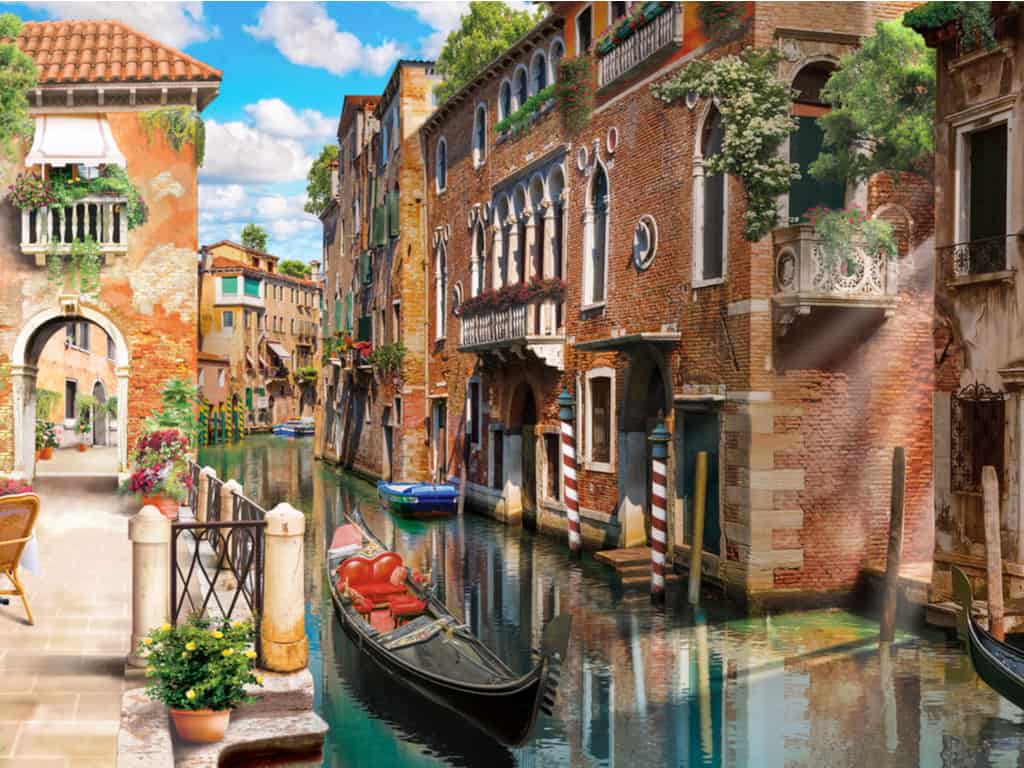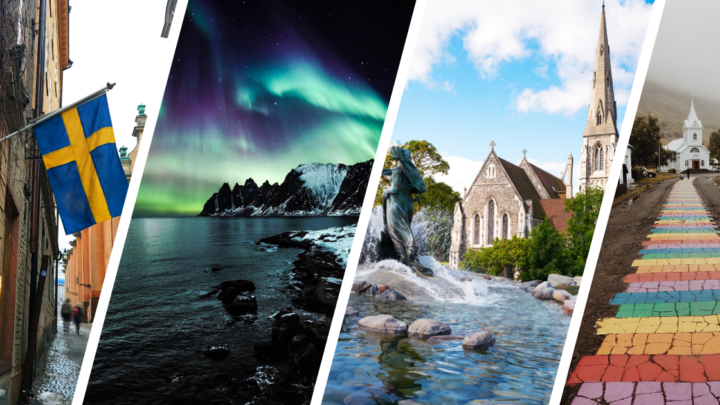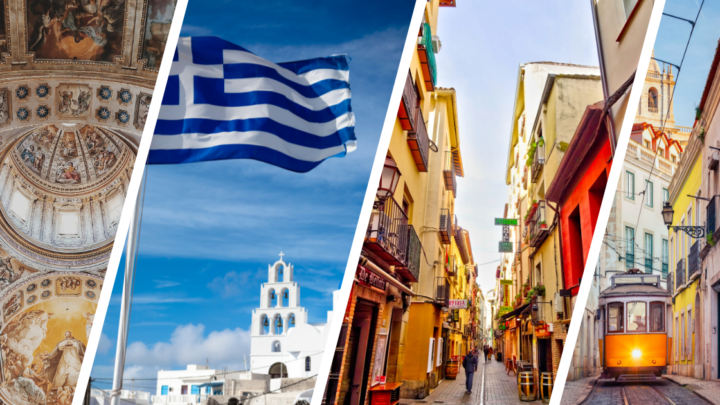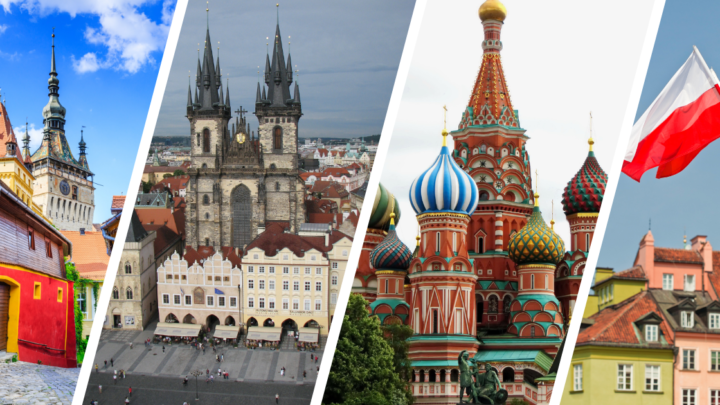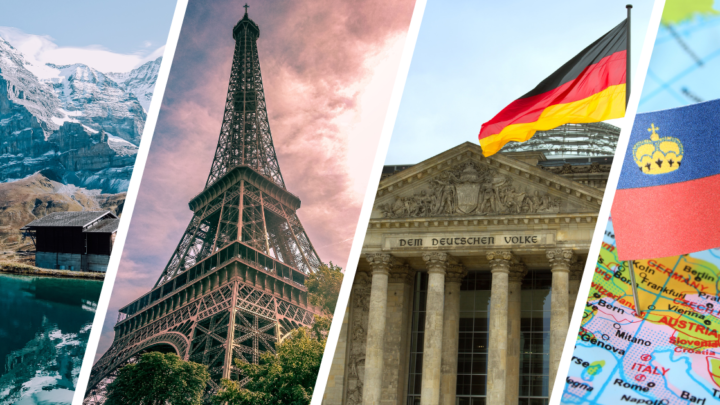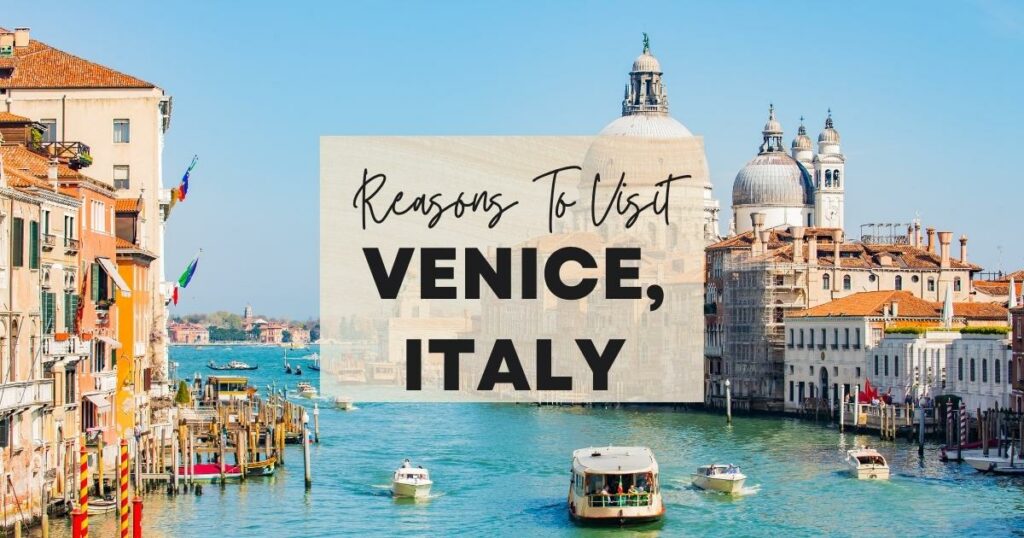Do you have Venice, Italy, on your holiday travel itinerary? Look at our carefully selected list of top Venice, Italy attractions below on the best thing to do in Venice, Italy, and places to go in Venice, Italy. Wondrous Drifter is a Web 3 travel company that aspires to disrupt the travel industry.
Table Of Content
- Burano Island
- Bridge of Sighs
- Caffe Florian
- Campanile
- Carnevale Festival
- Castello
- Dodge’s Palace
- Grand Canal
- Libreria Acqua Alta
- Lido Island
- Murano Island and the Glass Museum
- Museo del Merletto
- Peggy Guggenheim Collection
- Ponte Di Rialto
- Rialto Food and Wine Tour
- San Sebastiano
- St. Mark’s Basilica and Square
- Teatro la Fenice
- Torcello Cathedral
- Venice Biennale
- Explore Europe
Burano Island
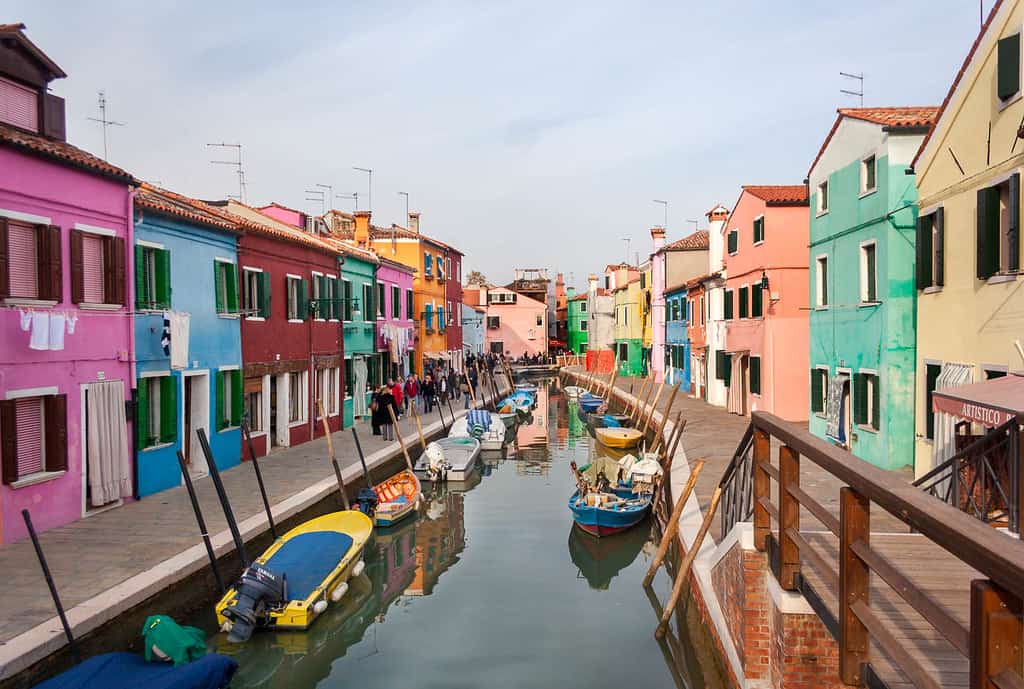
See beautiful lacework and colorful houses on this island.
Burano is still a peaceful community with just 2,000 full-time residents. Tourism is its leading economy, with day-trippers from Venice flocking to buy lace and photograph the colorful and lovely canals.
It’s quieter and more relaxed than the central metropolis, and while it can get packed, It’s not nearly as bad on a busy summer day compared to the famous Venice. Burano is the place to go if you want to experience the enchantment of the canals and lovely architecture in a much more relaxed setting.
Despite the discovery of ancient Roman ruins on Burano, the island was permanently colonized in the sixth century by people fleeing violent invasions on the mainland.
Burano is still an active fishing community, and the lagoon has traditionally provided food for the locals. Burano became popular in the 16th century because of the enormous demand for its lace, even though the adjacent island of Torcello was politically and tactically more critical.
Lacemaking has traditionally been done by hand in Burano. Although it fell out of favor in the 18th century, it was resurrected subsequently.
Come and take a day trip to this beautiful island when in Venice.
Address: Burano, Venice, Italy
Bridge of Sighs
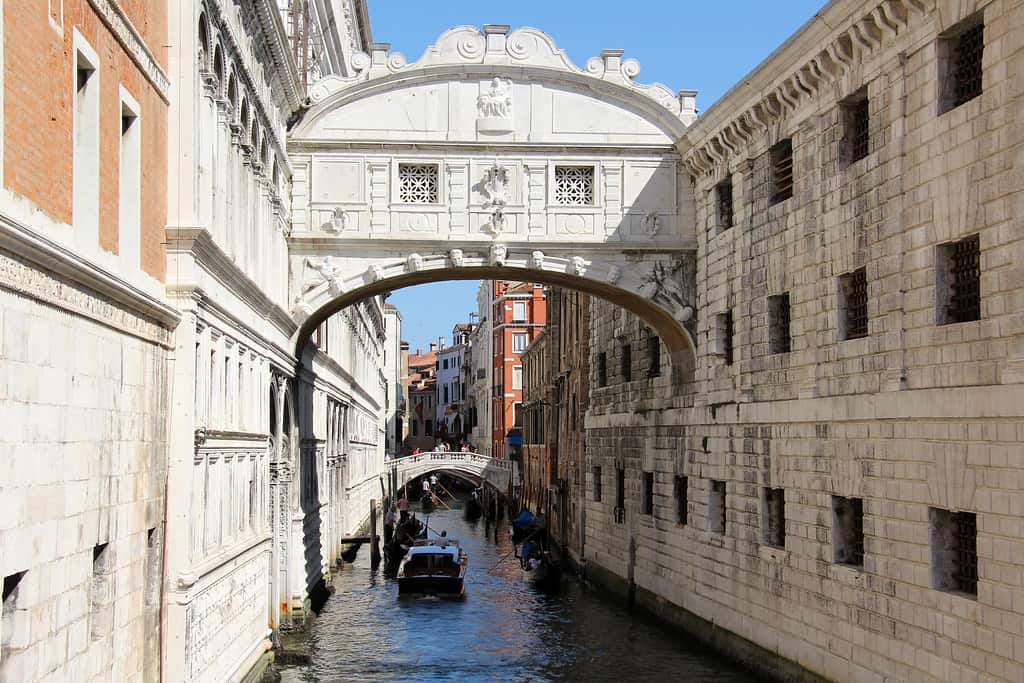
Are you sighing on the way to eternal love or to death?
The Bridge of Sighs is a one-of-a-kind enclosed white limestone bridge that spans the Rio di Palazzo in Venice. There’s a fascinating backstory to the name.
The lovely view through its stone “bars” was a convict’s last sight of Venice before losing their freedom… and frequently their life. As a result, they “sighed” as they passed.
Tourists can now pass through the bridge as part of a tour of the Doges’ Palace or line up outside for photos with it in the background. A gondola ride that passes beneath it can also be booked.
Locals alternatively claim to tourists that it is named after the “sigh” of couples sailing beneath it, and if you kiss under the bridge, you will find eternal love and owe it to Venice’s enchantment. The truth is a little grimmer!
If you want to admire the exterior of the Bridge of Sighs, stand on the Ponte Della Paglia, a bridge right in front of it by the water promenade.
Hopefully, you’re on your way to eternal love when you visit this stunning bridge.
Address: P.za San Marco, 1, 30124 Venezia VE, Italy
Caffe Florian
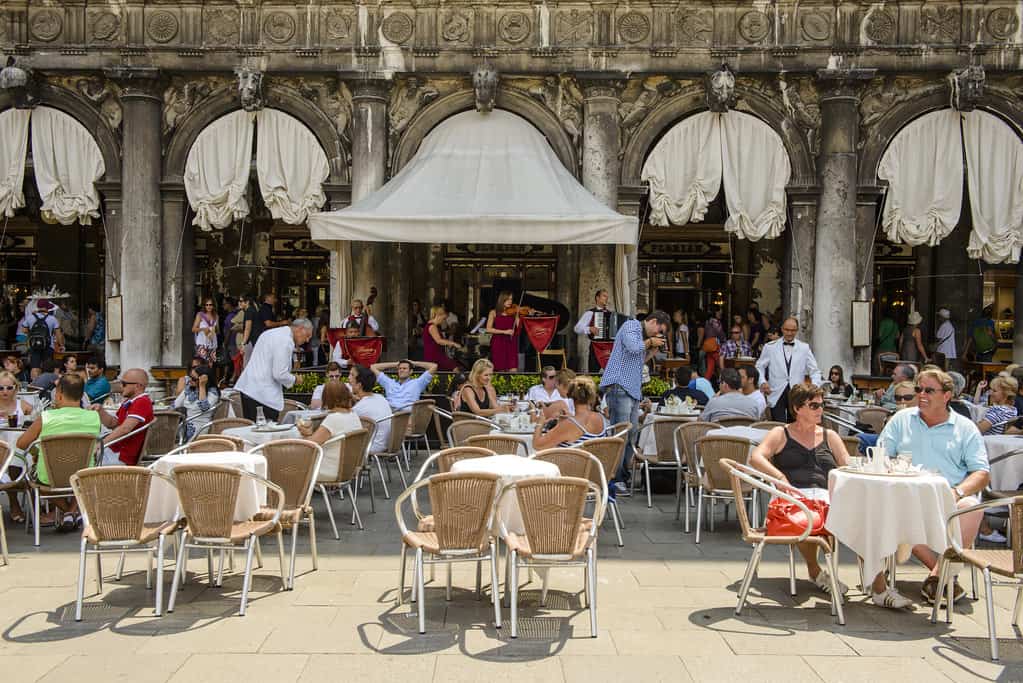
It is said to be the oldest cafe in the world.
Since 1720, Caffè Florian has been located in Piazza San Marco. It was once a hangout for figures like Proust, Dickens, and Casanova. Sure, it’s a tourist trap, but it’s a fascinating, lovely, and unmistakably romantic one.
Patrons gather around low marble tables, sipping hot chocolate and plucking beautiful pastries off silver trays, as musicians perform in the square out front (for which you are paying—a price will appear on your account).
It attracts visitors from all corners to see the elegant furnishings, or you can sit down and observe the piazza’s mayhem.
Their drinks, like sweet hot chocolate, as well as the intricate coffee combinations, are well-known.
Likewise, you’ll see a lot of people sipping an Aperol spritz while enjoying their afternoon.
Furthermore, a cafeteria-style cuisine includes packed sandwiches, exquisite layered cakes, dishes of local candies, and dressed-up gelato tubs.
Grab a bite to eat at this famed cafe now.
Address: P.za San Marco, 57, 30124 Venezia VE, Italy
Campanile
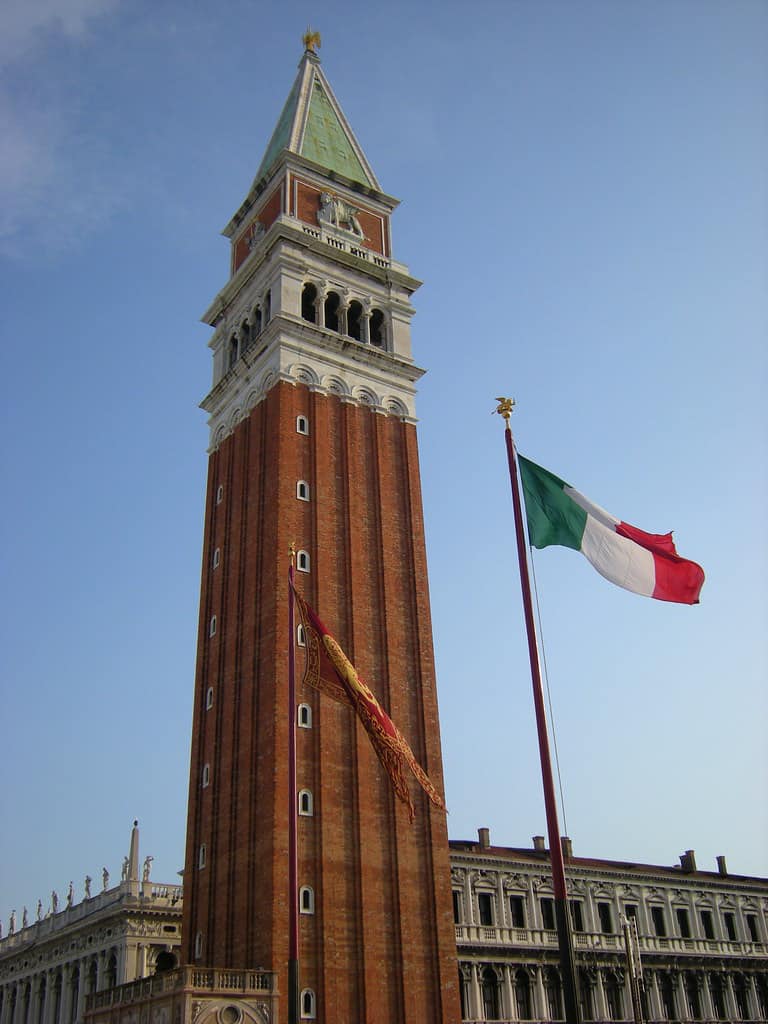
The king of the Venice skyline.
The Campanile, which towers over Piazza San Marco like a gigantic exclamation point, is not the first building to hold this location.
Reconstruction of the original, designed as a beacon in 1153, was needed after it abruptly crashed into the square in 1902.
Sansovino’s four bronze masterpieces can be seen between the columns in the loggia at the base, all recovered from the rubble following the collapse.
Prisoners, especially rebellious priests, were hanged from the Campanile’s exterior in cages for weeks at a time in medieval times.
From the summit of the Campanile presently, you can see all the way to the Adriatic Sea.
Additionally, it’s becoming a well-known tourist destination. Standing in line for the lift might be long, so remember to be there early or right before closing time!
See amazing views of Venice when you climb up the Campanile.
Address: P.za San Marco, 30124 Venezia VE, Italy
Carnevale Festival
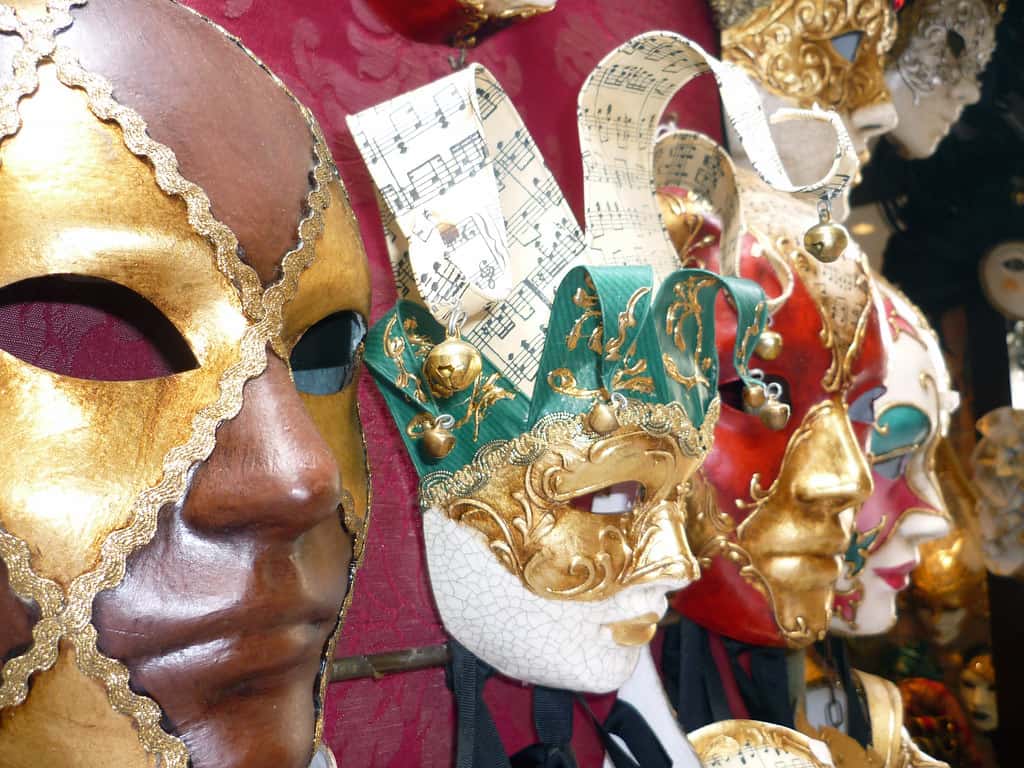
Live your masquerade-ball dreams when you come and experience this festival.
With an act of the Senate of the Republic of Venice in 1296, the carnival became a public celebration, but its origins are considerably earlier. Official documents from 1094 revealed evidence of public celebrations in the days leading up to Lent.
The carnival during this time, and for the following centuries, consisted of several weeks of celebration and enjoyment throughout the city, during which people could enjoy music, dances, and parties while rarely working.
When the carnival reached its peak in the 18th century, it became worldwide famous and respected.
The novelist Casanova lived in Venice during this time, alternating between wild parties and love adventures.
Moreover, the tradition of wearing masks was outlawed at the turn of the century, with the French conquest of the Republic first and the Austrian occupation subsequently.
The carnival only continued on a few lagoon islands, albeit in a diminished form. The ancient tradition was only resurrected in 1979 in the form that we see today.
Venice has a magical atmosphere thanks to the carnival charm. Smiles and laughter fill the streets, and various events are held throughout the city.
Overall, carnival typically lasts a few weeks, but the most important days are those from the last Thursday through the previous day, Tuesday.
Make sure to experience the Carnevale Festival when you come to Venice.
Address: Venice, Italy
Castello
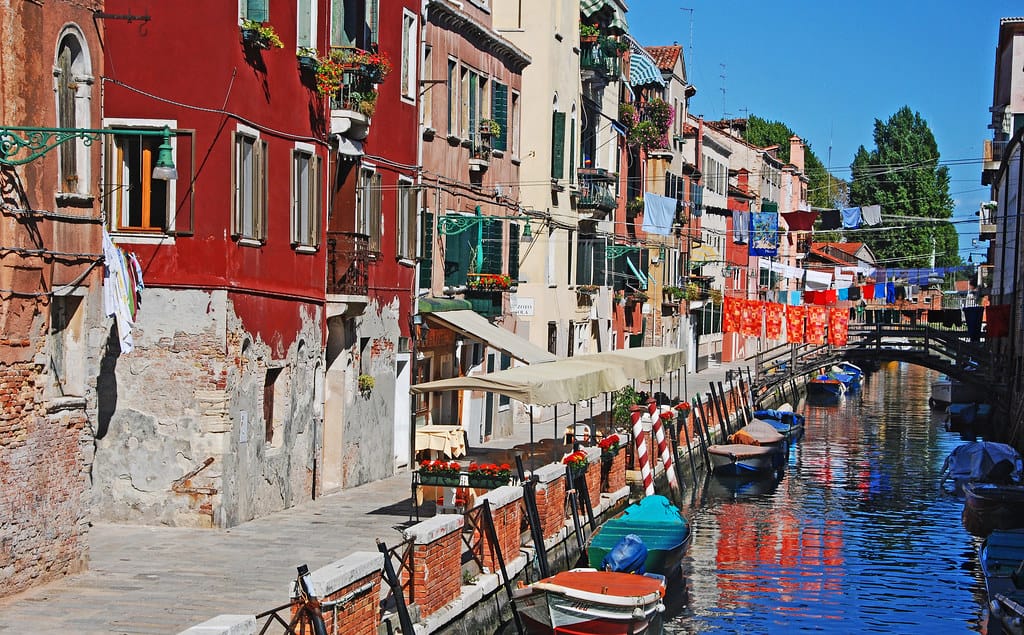
Experience walking through an authentic Venitian Neighborhood.
Castello is one of Venice’s six principal sestieri (neighborhoods), yet it is also one of the least visited. This is somewhat surprising given that Castello is Venice’s largest neighborhood.
It spans the entire eastern half of the island and is home to numerous spectacular landmarks, excellent restaurants, and the famed Biennale art display.
Castello runs from St. Mark’s across the canal via Ponte della Paglia to the Giardini Gardens and San Pietro in the furthest corner of the island.
Castello is the most diverse of the sestieri, thanks partly to its size, with a surprising amount of greenery (Giardini Gardens), local residential neighborhoods, the hospital, and several characteristic Venetian plazas, and still plenty of churches, historic structures, and classic monuments.
The now-off-the-beaten-path Castello was formerly the principal center of power in Venice, named after the former fortification on the island of San Pietro. Take a journey on the 4.1 or 5.1 boat lines, which cruise along the lagoon side of this often misunderstood neighborhood, affording stunning glimpses of its remarkable variety.
Wander around Castello now and get lost in its charm.
Address: Castello, Venice, Italy
Dodge’s Palace
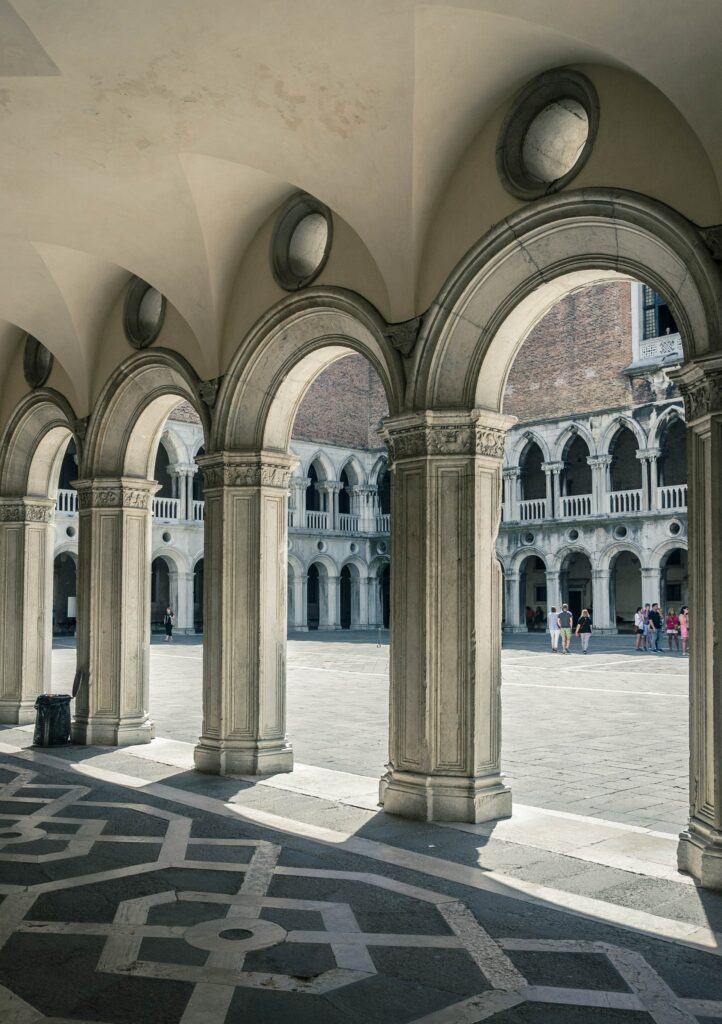
This glorious Palace is a must-see.
The Republic of Venice was founded in the eighth century. It lasted until the late eighteenth century, when Napoleon began his conquest.
During that time, The Doge, a supreme magistrate elected for life by Venetian nobles, presided over the Republic. Consider him a cross between a Pope and a President.
The magnificent Palazzo Ducale (Doge Palace), which once housed the Doge, is now one of Venice’s most recognizable sights and a famous museum.
The interior of the Doges’ Palace is lavish, with spectacular views of the city. It has a fantastic facade of beautiful pink Verona Marble and gorgeous stone arches, and numerous sculptures inside.
Visitors will be able to see the Doge’s chambers and apartments which are honestly amazing. As well as have the chance to see the old prison cells and walk through the Bridge of Sighs as a stark contrast.
Check out the magnificent Doge’s Palace now.
Address: P.za San Marco, 1, 30124 Venezia VE, Italy
Grand Canal
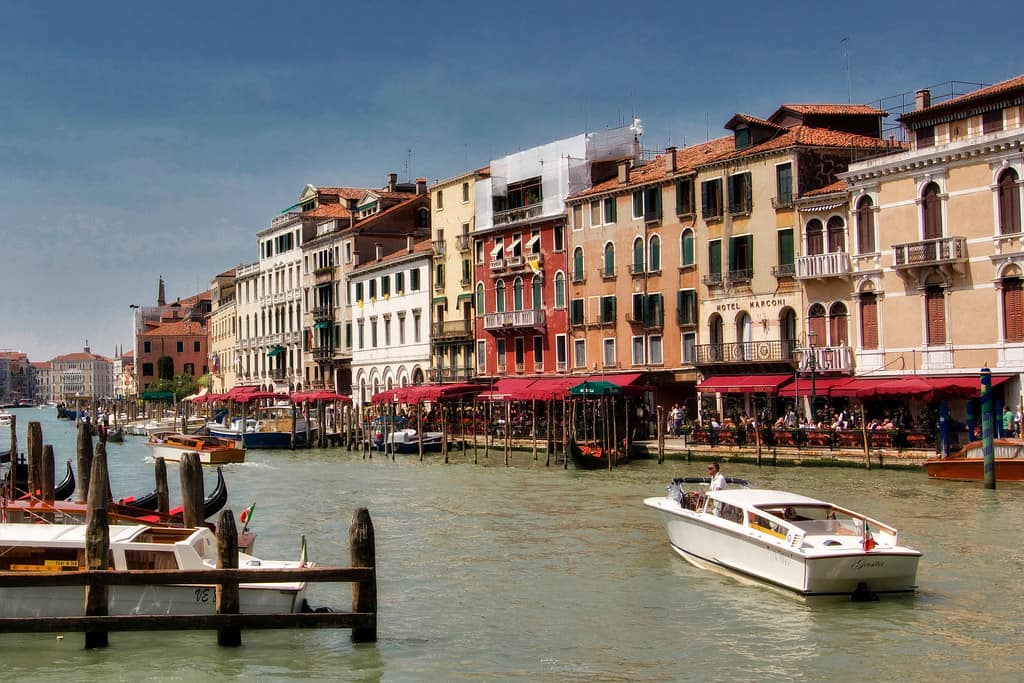
Float through these historic waters of Venice.
Grand Canal, Venice’s water, is its lifeblood. It connects the city’s main square with the Rialto Bridge, the island’s rail station, and the bridge arriving points on the island.
Only four bridges span the 3.8-kilometer length, although traghetti, or stripped-down gondolas, shuttle between them at many spots.
The Grand Canal was the preferred address for anyone with a stake in Venice. All of the significant families’ palaces face the canal, with their striking Venetian Gothic and Early Renaissance façades facing the water, which is how guests enter.
The easiest way to see these magnificent palaces – or their facades – is to take a Vaporetto ride along the canal, Venice’s floating public transportation system.
A Venice Grand Canal boat tour, which sometimes includes some of the smaller canals, is another option for seeing the palaces at a more leisurely pace. A gondola ride around the Grand Canal at night is, of course, one of the most romantic things to do in Venice.
The grand canal is a must-experience on your next adventure to Venice.
Address: Venice Grand Canal, Venice, Italy
Libreria Acqua Alta
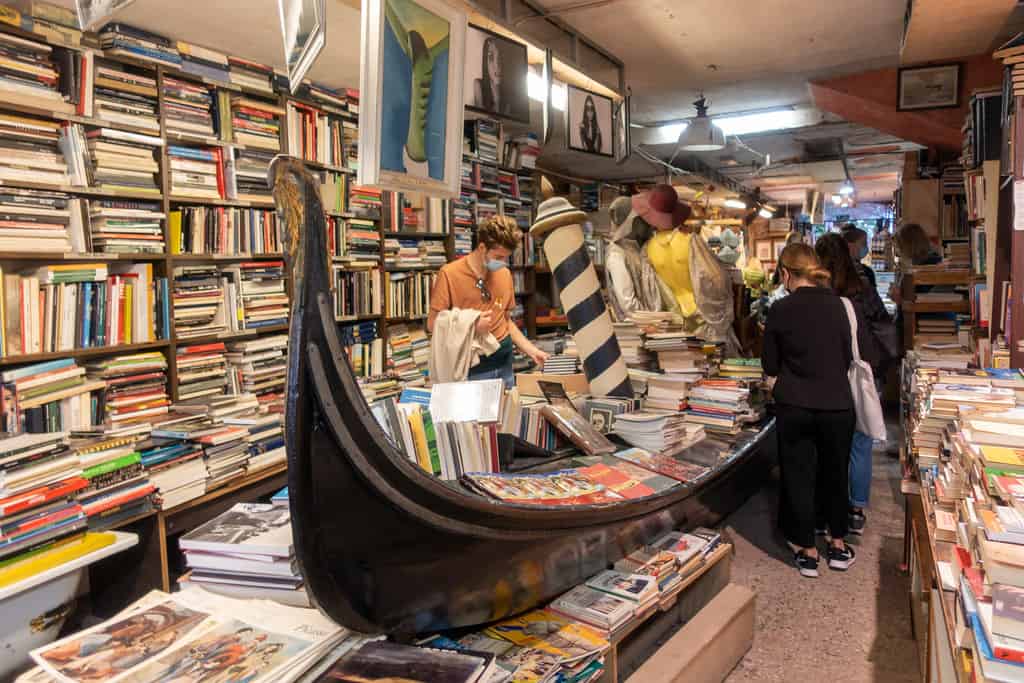
Check out this one-of-a-kind bookshop.
Keeping a book collection in a city where the roadways are filled with water is risky enough, but Venice’s Libreria Acqua Alta has no such worries because all of its texts are kept in watertight basins.
The self-proclaimed “most beautiful bookshop globally” comprises several overflowing rooms crammed with books, periodicals, maps, and other souvenirs. However, these lovely heaps are housed in bathtubs, watertight bins, and a full-size gondola in one chamber due to Venice’s continual flooding.
Its name, “Book Store of High Water,” derives from the fact that when the local waterways rise to fill the store, the water might reach inches from the floor, destroying any other collection. The “fire escape,” which is essentially a door leading out into a canal, reflects the store’s whimsically constrained atmosphere.
The store has taken in more than one stray cat, who hangs up on the stacks to escape the rising tides to complete the effect.
This Venice book store has become an Instagram destination with whimsical little “backdrops” for shots all over the store.
Take insta-worthy pics now at this unique bookshop.
Address: C. Longa Santa Maria Formosa, 5176b, 30122 Venezia VE, Italy
Lido Island
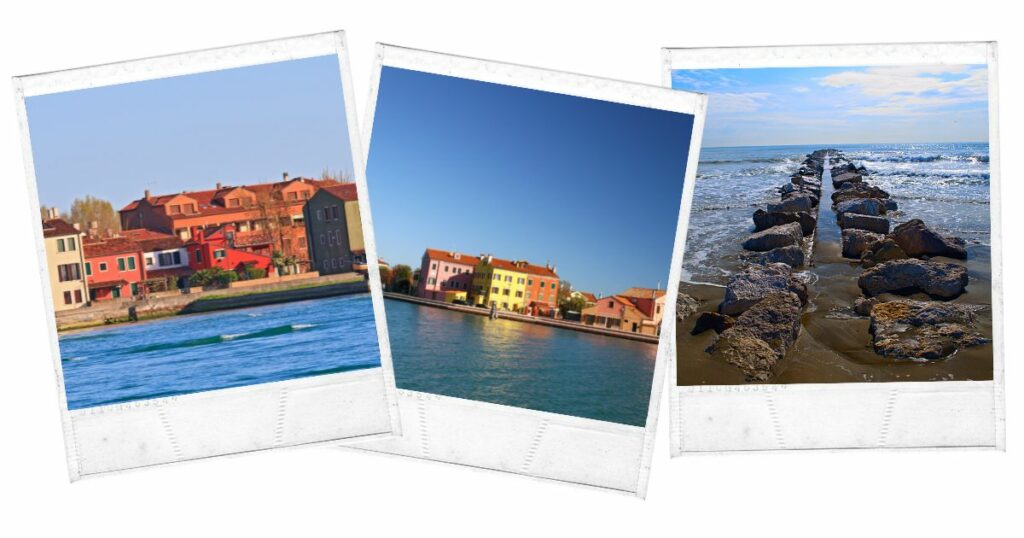
Home to the Venice International Film Fest.
The 12-kilometer stretch of sand that divides the Venetian lagoon from the Adriatic Sea was Europe’s first actual beach resort. It was Europe’s most fashionable drinking area for kings and celebrities at the turn of the century.
The big hotels now still welcome visitors and own the gorgeous fine-sand beaches, which can be shared with hotel guests for a fee.
The island’s public beaches are located near the chapel of San Nicolo, which houses the remains of St. Nicholas.
Lido can be explored on foot or by renting a bicycle near the landing stage, where the 10-minute Motonave or longer Vaporetto ride from St. Mark’s drops you off.
Art Nouveau mansions and hotels flourish on the island; go down some side alleys to see them.
The International Film Festival, held in the Palazzo del Cinema, takes place in the Lido in August and September.
Relax now on the beautiful sands of Lido.
Address: Lido de Venezia, Venice, Italy
Travel is the healthiest addiction. Go travel, pack your bag and see the world. Experience different cultures around the world by checking out the list of the countries to visit around the world. When you explore the world, you have to go to the USA. Fancy an all-American experience? Click here for the best state in USA to travel.
Murano Island and the Glass Museum
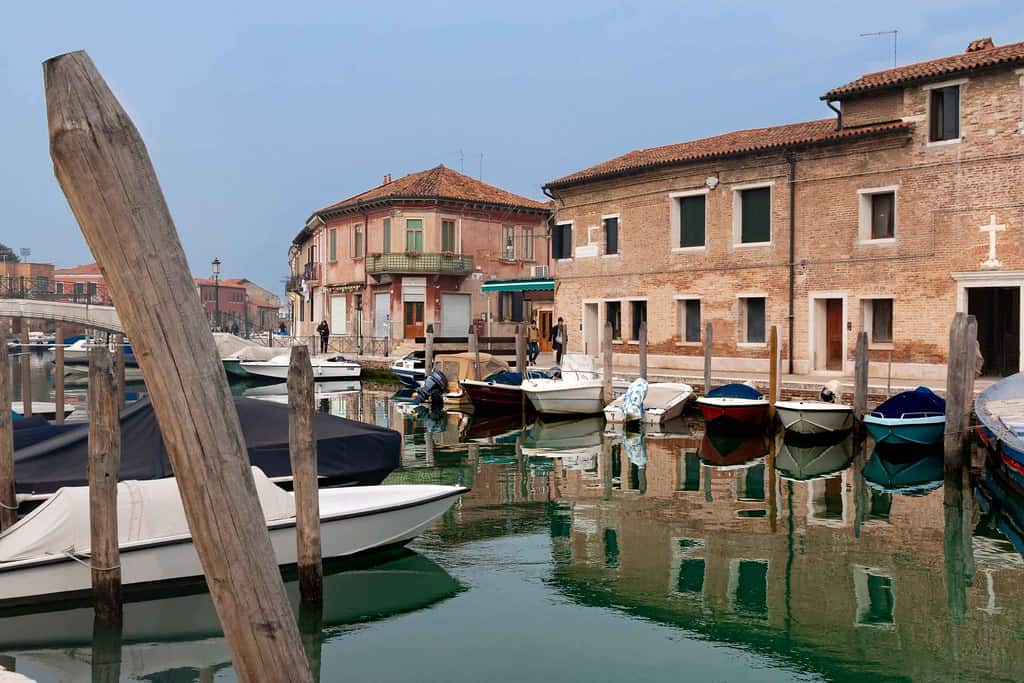
See exquisite glass handicrafts on this island.
Murano is another of the Venice district’s islands; this region of land is actually made up of several small islands connected by a network of canals and bridges (much like Venice).
Murano has a beautiful charm and is generally less crowded than Venice’s prominent neighborhoods.
The Basilica del Santa Maria, the Campo Santo Stefano, and the Palazzo Da Mula are among the many attractions in this lovely island town.
Make time to visit Murano and marvel at the island’s legendary traditional glass-making artistry.
The exquisite light-altering goods are still manufactured at the Fornace Ferro Murano glass factory, where visitors are welcome to peek inside an open studio.
Still, the Murano Glass Museum has more information on history and artisanal craft.
We wonder how anyone can visit this location and not come home with visions of rainbow chandeliers and little glass fruit.
Experience how a generation passed art is done at Murano Island.
Address: Murano Island, Venice, Italy
Museo del Merletto
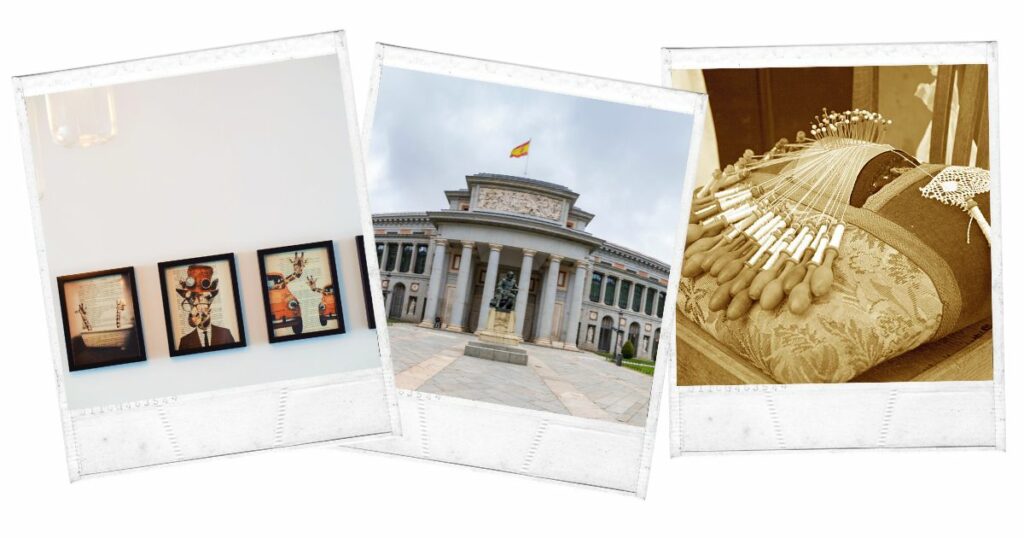
Experience the creation of a historical symbol of sophistication.
The Lace Museum in Burano presents the narrative of a craft that transcended class lines, persisted for generations, and evoked the pinnacle of luxury in the Republic’s glory.
Lace-making was both a creative outlet and a successful business, yet the art was nearly lost multiple times as the fashion for handcrafted lace changed.
A video explaining the early roots of lace-making and its geographical migration from northern France to Bohemia, Malta, and Turkey opens the show downstairs.
Rooms upstairs cover critical advancements from the sixteenth through the twentieth centuries. Pattern books, journals, paintings, furniture, costumes, and an extensive collection of samples help to contextualize the emerging work.
A group of local lacemakers typically sit tatting and conversing beneath photos of the Lace School, which was located here from 1872 to 1970 and where many of them learned their skill. Don’t be afraid to inquire about their job.
Visit the Museo del Merletto now and see lavish hand-crafted lace.
Address: P.za Baldassarre Galuppi, 187, 30142 Venezia VE, Italy
Peggy Guggenheim Collection
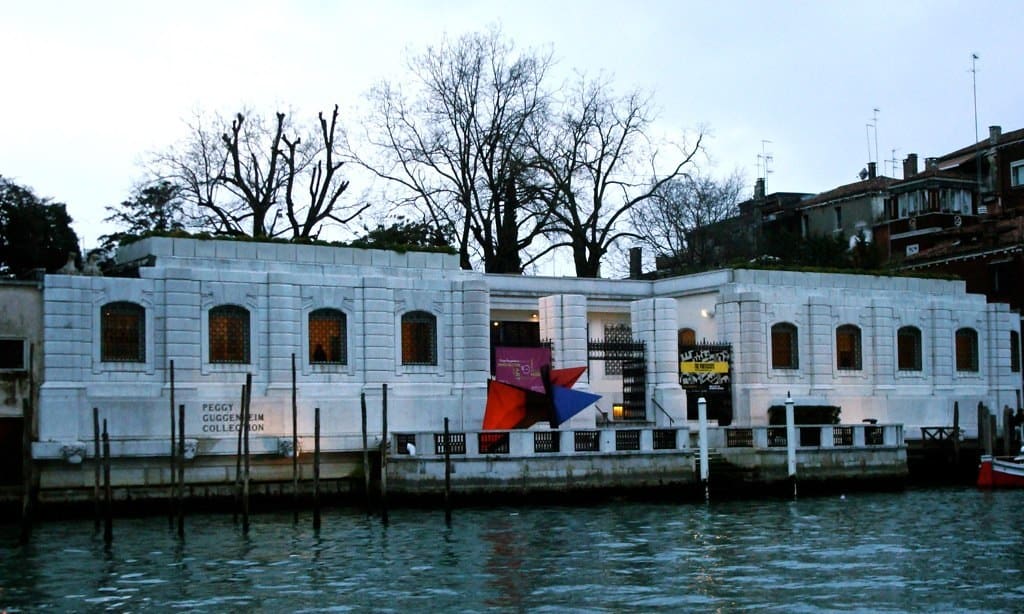
View an extensive collection of fantastic art here.
This squat palazzo on the Grand Canal was formerly the home of Peggy Guggenheim, an eccentric gallerist and collector. She was instrumental in the careers of painters such as Jackson Pollock, Max Ernst, and Alberto Giacometti.
Today, the museum retains the impression of a private residence—rooms are cozy and personal, and Guggenheim’s story is integrated throughout the display spaces.
Guggenheim collected most of the artwork on show during her lifetime, and it’s some of the best art of the twentieth century. Two Picassos hang adjacent to a Calder mobile in the foyer. There are Kandinskys, Brancusi’s, Pollocks, and Dals in rooms. Joseph Cornell boxes are used to line one mantlepiece. The museum also houses a replica of René Magritte’s “Empire of Light,” one of his most famous works.”
Seasonal exhibitions range from detailed dives into certain areas of Guggenheim’s collection ( a closer look at her later years, when she purchased many items by Japanese artists) to single-artist exhibits that feel natural.
The café, the magnificent canal terrace, and the sculpture garden all have chairs, and it’s a small museum with little rooms all on one level. Wheelchairs are available in the cloakroom, and the main building is accessible via elevator.
It’s undoubtedly not a place for art lovers to miss. Visit this museum now.
Address: Dorsoduro, 701-704, 30123 Venezia VE, Italy
Ponte Di Rialto
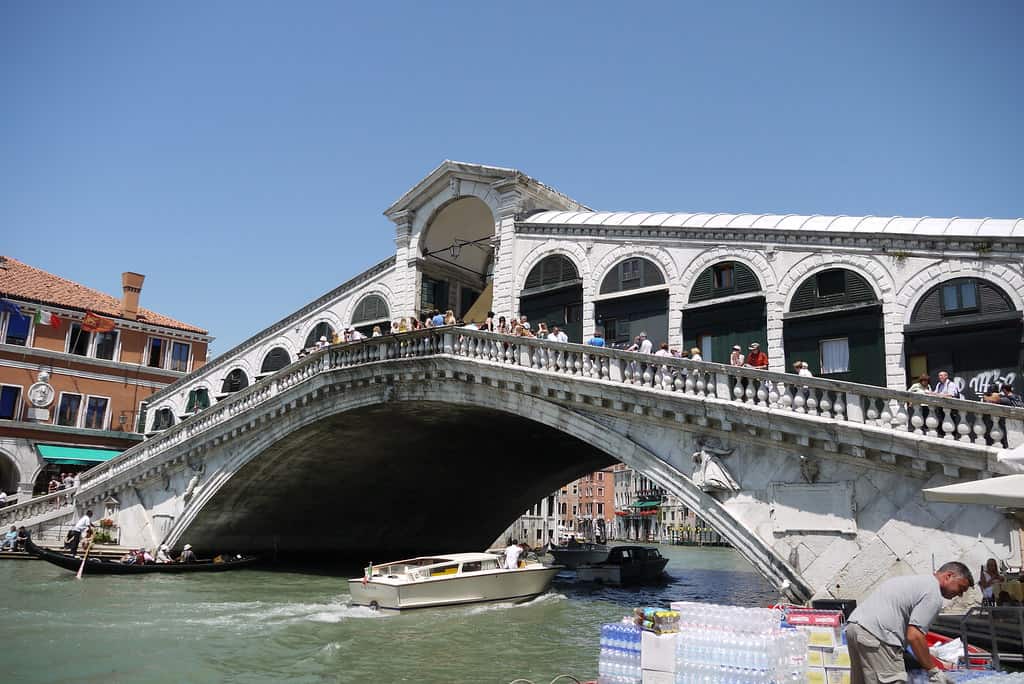
The most famous bridge in all of Venice.
The 7.5-meter (24-foot) arch of the Rialto Bridge was created to allow galleys to pass over, and the immense structure was built on 12,000 wooden pilings that are still supporting the bridge more than 400 years later.
Antonio da Ponte (“Anthony of the Bridge,” as the name suggests) fought for the contract against prominent designers such as Michelangelo and Palladio.
The bridge includes three walkways: two outer balustrades and a more extensive middle walkway that connects two rows of tiny shops selling jewelry, linens, Murano glass, and other tourist-oriented things.
The Rialto Bridge inspired several other bridges in the United Kingdom, including the Pulteney Bridge in Bath.
Tourists enjoy visiting the bridge’s merchants late at night for local jewelry and other treasures, especially when we get to get the perfect sunset photo on the way out.
Don’t forget to visit the famed bridge when in Venice.
Address: Sestiere San Polo, 30125 Venezia VE, Italy
Rialto Food and Wine Tour
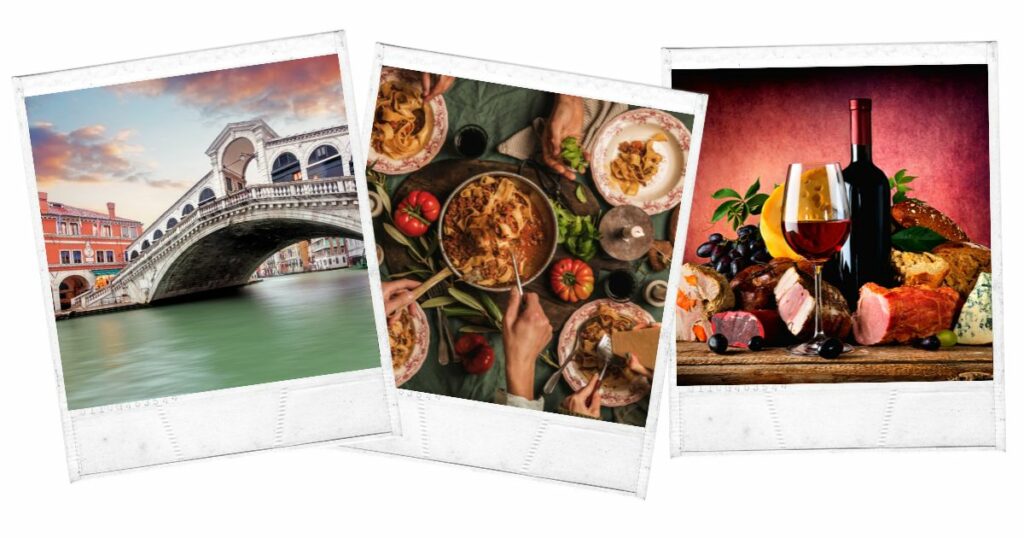
Take delight in sampling the best of Venitian cuisine.
The food market on the Rialto Bridge is well-known for its Italian goods and homemade pasta.
The Rialto Food & Wine journey takes you around the fresh daily markets, where you can enjoy fresh cow cheese from Asiago’s highlands, polenta pieces with marinated shellfish, and olives from Lake Garda. The tour comes to a close at Campo San Giovanni e Paolo, a famous square with delicious sweets.
Take a tour with the Enrica Rocca Cooking School if you want a more in-depth look at the market and the regional ingredients on offer — you’ll also get to create traditional Venetian meals with the chef.
The market is located on Rivoaltus, a small island in the middle of Venice that was one of the first settlements by early Venetians. This area had already been the town’s major marketplace by the 11th century.
As visitors cross the Rialto Bridge and enter the lively market, the guide will tell you all about it. The guide will discuss the history of business in Venice, as well as how the market continues to bring local produce and fish to Venetians today.
Eat to your heart’s desire now and sample the best food Venice has to offer.
Address: Rialto, Venice, Italy
San Sebastiano
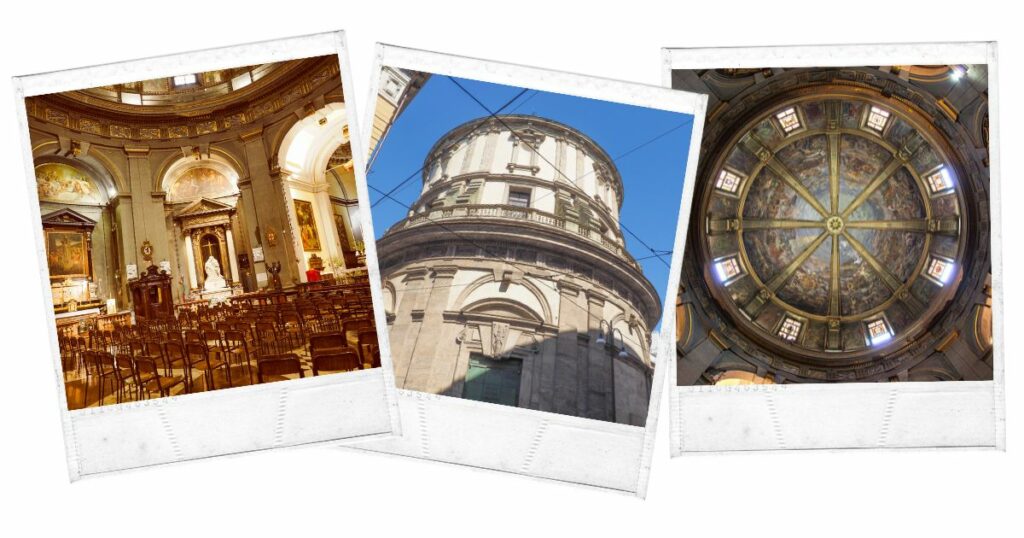
At this church, it’s the inside that counts.
At this neighborhood church, Antonio Scarpignano’s rather austere 1508–48 exterior provides a false modesty.
Paolo Veronese’s floor-to-ceiling masterpieces, created over three decades, adorn the interior. According to local mythology, Veronese sought refuge in San Sebastiano in 1555 after fleeing murder charges in Verona, and his works in this church express effusive gratitude to the parish while also poking fun at his accusers.
Veronese decided to be buried here, among his works of art — his memorial bust may be seen to the right of the grand organ. From the horses rearing on the coffered ceiling to the organ doors covered with his Presentation in the Temple, the artist’s mastery is fully displayed.
The bound saint fiercely stares down his tormentors in the Martyrdom of Saint Sebastian at the altar, amid a Venetian crowd of socialites, turbaned traders, and Veronese’s distinctive bouncy spaniel.
St Sebastian was a fearless patron of plague victims in Venice, according to Veronese, and while sticks and stones may have broken his bones, Venetian slander could not kill him. Peek into the sacristy to see Veronese’s ceiling-mounted Coronation of the Virgin (1555).
See beautiful works of art now inside this church.
Address: Campazzo San Sebastiano, 30123 Venezia VE, Italy
St. Mark’s Basilica and Square
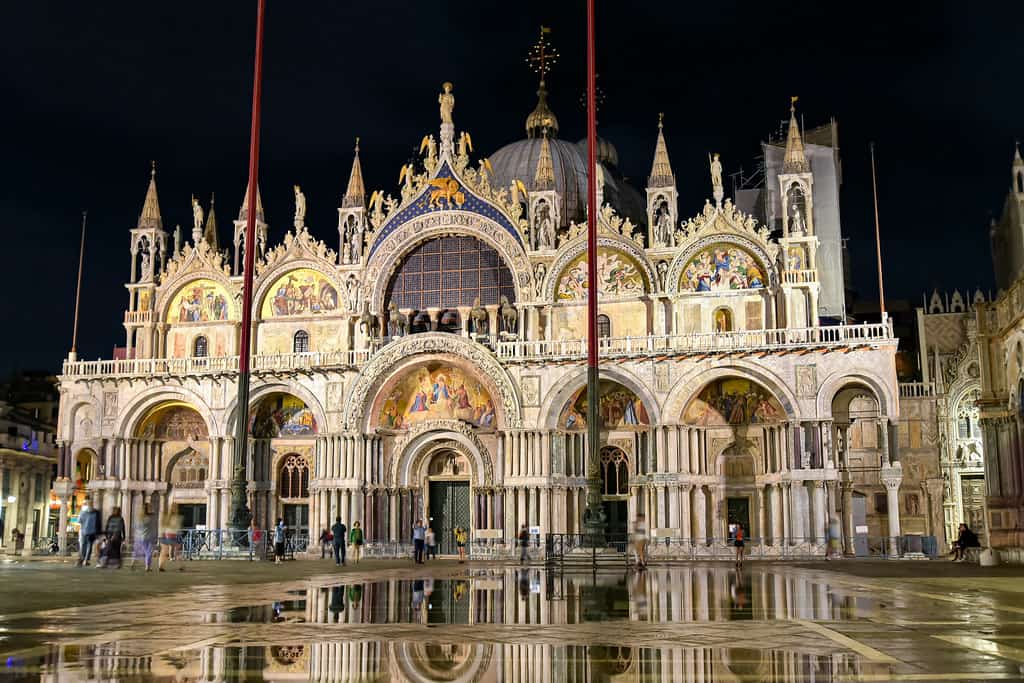
An iconic Venitian landmark.
Originally constructed in 829 and dedicated in 832, Venice’s Church di San Marco, or Saint Mark’s Basilica.
It is a basilica dedicated to the veneration of St. Mark’s bones, which were brought to Venice from Alexandria.
After the death of St. Theodore, St. Mark became Venice’s patron saint, and his flying lion became the official emblem of the Venetian Republic.
San Marco Basilica served as the doge’s chapel and was built alongside the Palazzo Ducale, or Doges’ Palace. It was not until 1807 that it was designated as Venice’s cathedral church.
The previous basilica was destroyed in 976 during a popular uprising against Doge Pietro Candiano IV but was rebuilt by his successor, Doge Domenico Contarini (died before 1070), and the current basilica was completed in 1071.
Moreover, its design is distinctly Byzantine, and both Byzantine and Italian architects and craftsmen are likely to have worked on the building and decorating.
St. Mark’s Square serves as the starting point for various activities in the neighborhood.
The Museo Correr, the Archaeological Museum, the Torre dell Orologio, the Basilica di San Marco, and the adjacent Doge’s Palace are all located on the square.
See this famed Basilica when you come and visit Venice.
Address: P.za San Marco, 328, 30100 Venezia VE, Italy
Teatro la Fenice
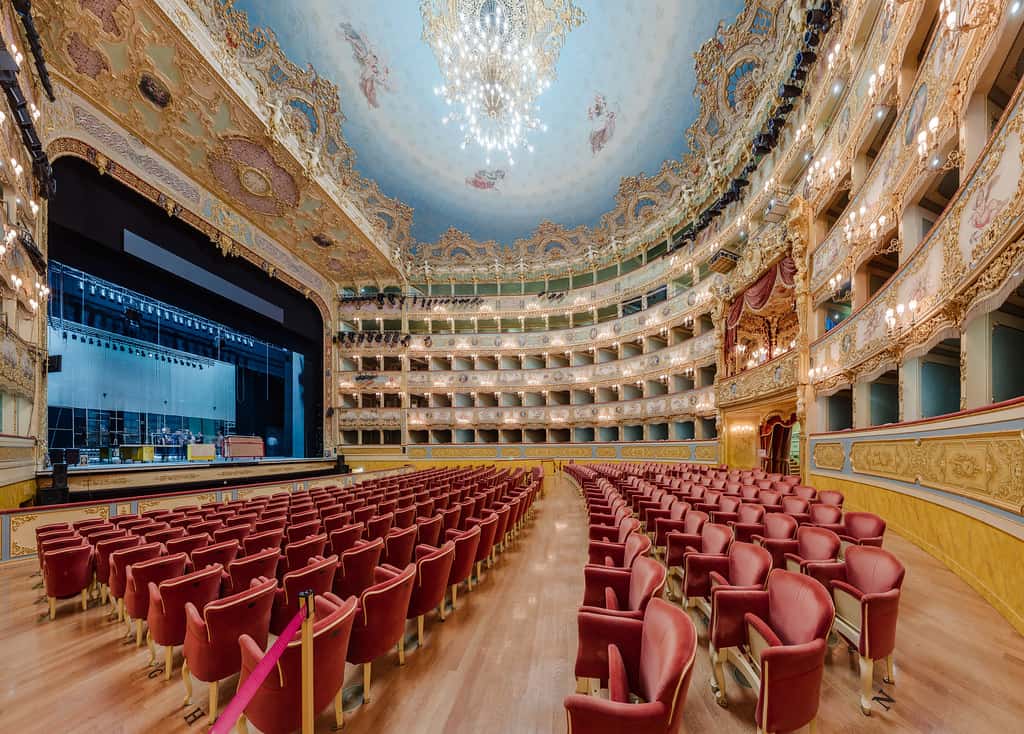
Theater lovers and even those who aren’t would marvel at the splendor of this theater.
The Teatro La Fenice is located in the San Marco neighborhood of Venice’s historic center. The theater is situated on an island between the Rio della Veste, Rio de la Verona, and Rio de l’Barcaroli canals.
The theater appears less intimidating from the outside than many of Venice’s other old buildings. Still, the street lamps on both corners and the interior lighting create a fantastic ambiance at night. However, appearances might be deceiving because entering the theater’s front doors is like entering another universe.
There isn’t a single detail that sticks out once inside the La Fenice theater; everything impresses. Everything about this place is authentic, from the antique chairs to the colossal chandeliers, from the applied colors on the walls and decorations to the ceiling with angels hovering above you.
In 1792, the first theater in this location opened its doors. Indeed, the first theatre this structure in Venice was destroyed by fire multiple times.
You will love visiting this theater not only for its architectural and artistic value but also for the opportunity to see an opera or other production. There are audio guides as well for those who want to come in the daytime.
Marvel at its architecture now and visit to learn more about the Teatro la Fenice.
Address: Campo S. Fantin, 1965, 30124 Venezia VE, Italy
Torcello Cathedral
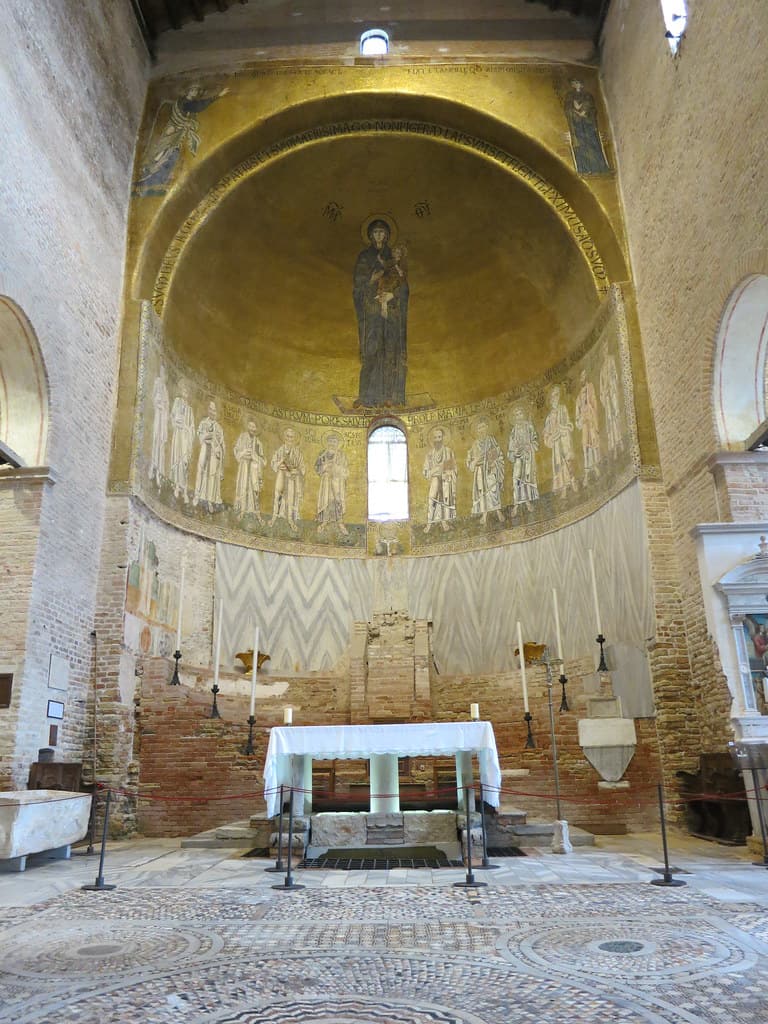
A Byzantine legacy dating back 14 centuries.
Torcello island, which is significantly less busy than the central regions of Venice, is an excellent choice for a calm getaway. Torcello is located to the east of the central portion of Venice, behind Burano, and is about 45 minutes by regular ferry from Venice.
The Basilica of Santa Maria Assunta, which dates from the seventh century and is the old cathedral of the former diocese of Torcello, is the principal place of Catholic devotion on the island of Torcello, in the lagoon of Venice. The structure is an actual example of Venetian-Byzantine architecture.
It was built on behalf of the Byzantine Exarch of Ravenna when the episcopal seat of Altino was transferred to Torcello to avoid Lombard attacks on the mainland. At its peak back in time, it was also a major trading center.
Torcello Cathedral is the oldest structure in Venice, having been erected in 639 AD. The altar features a gold-leaf masterpiece from the 11th century, ornate icons of Virgin Hodegetria, and an expressive mosaic called the ‘Harrowing of Hell.’ This frightening cathedral is also home to Saint Cecilia’s skull, housed here for hundreds of years.
Take a stroll down Torcello’s main street and observe the gorgeous canal until you reach the fantastically designed Church of Santa Maria Assunta.
Visit this church that has stood the test of time.
Address: Fondamenta dei Borgognoni 24, 30142 , Venice, Italy
Venice Biennale
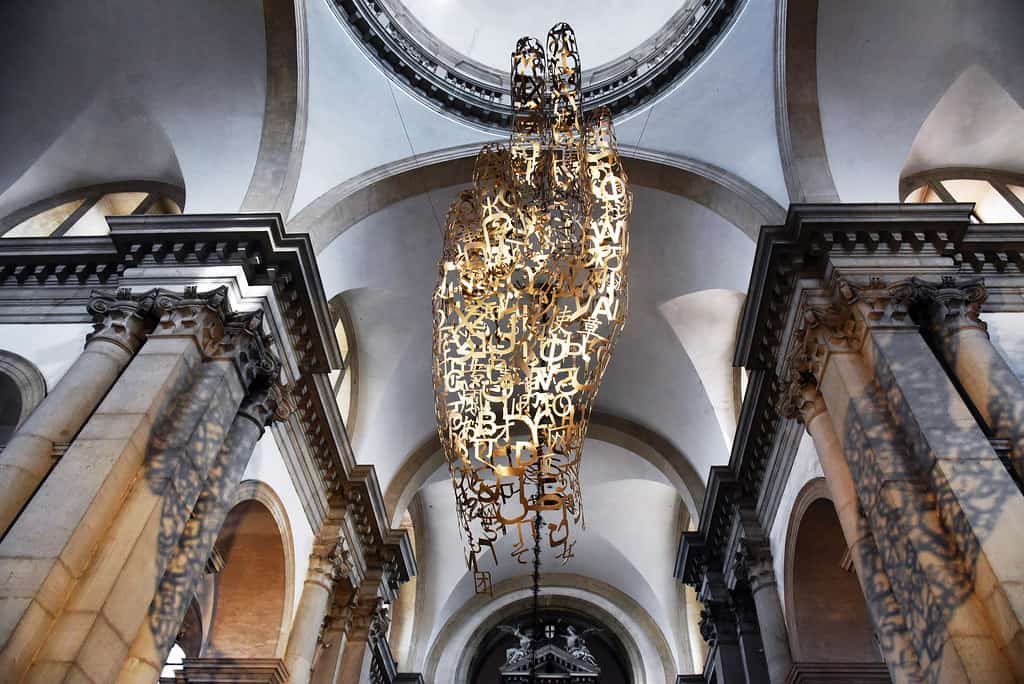
Are you planning a trip to Venice this summer?
The newly started Venice Biennale — an 8-month international celebration of art and culture held every other year is finally back and is a chance to see some of the world’s top artists in one spot.
The event, which dates back to 1895, is divided into three sections: the central show, which is housed in a series of sprawling industrial buildings in an old dockyards area known as Arsenale, as well as the central pavilion of the Giardini della Biennale; the national pavilions, the majority of which are in the Giardini, which is home to an architectural mishmash of houses built in historical and modern styles from 29 countries.
Every year, an artistic director is chosen to organize the festival’s core show, which in many ways sets the tone for the whole event. Cecilia Alemani, who runs the art program for Manhattan’s High Line in New York, was the honored recipient this time. Her Venice display, “The Milk of Dreams,” was inspired by the late artist and novelist Leonora Carrington’s children’s book.
The exhibit is replete with marvelously unbelievable gems regarding the surrealist picture book; it is also a rich tribute to women in art. In a complete 180-degree turn from the norm, identifying a man’s work among the roughly 200 artists represented is frequently challenging.
So go immediately and try to give yourself at least two days if you can, wear your most comfortable shoes, and remember to drink plenty of water.
Is there anything else holding you back from making Venice, Italy, your next vacation destination? Check out why visit Venice, Italy, at least once in your lifetime here.
Address: C. Giazzo, 30122 Venezia VE, Italy

